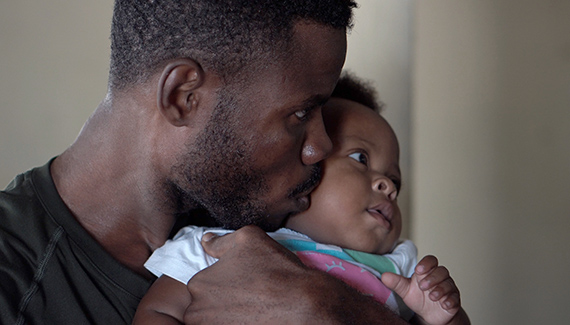|
|
|
|
 A quantum processor semiconductor chip connected to a circuit board in a lab at the University of Rochester, a lead partner for the region’s NY SMART I-Corridor Tech Hub. (University of Rochester photo / J. Adam Fenster)
Buffalo-Rochester-Syracuse region designated prestigious federal Tech HubAt a Rochester event on Monday held at University of Rochester-affiliate NextCorps, US Senate Majority Leader Charles E. Schumer along with US Representative Joe Morelle, Micron CEO Sanjay Mehrotra, University of Rochester Vice President for Research Steve Dewhurst, and local leaders announced that the Buffalo-Rochester-Syracuse region won the prestigious federal Tech Hub designation created in the CHIPS and Science Act. The designation puts Upstate New York further on the road to becoming America’s semiconductor superhighway.
Schumer said that the three-region consortium—of which the University of Rochester is an educational and lead partner—is one of only 31 regions selected for the Tech Hub designation. The region’s NY SMART I-Corridor Tech Hub proposal will now be able to compete for the next phase of the Tech Hubs Program that will invest between $50 and $75 million in each of five to 10 designated hubs.
Learn more about the region’s strengths in semiconductor manufacturing.
Human brain’s ‘temporal scaffolding’ inspires new AI approaches
New perspective on syncopation in 20th century music
(Getty Images)
A study by Joseph VanderStel ’22E (PhD) and David Temperley, a professor of music theory at the Eastman School of Music, offers a new perspective on the topic of syncopation—the accenting of weak beats—in popular music.
The researchers compiled a corpus of 100 songs—the number-one song from each year of the 20th century—transcribing the melodies and adding lyrics and syllabic stress annotations. Their findings, which appear in the Journal of New Music Research, include:
- There is a distinction between two types of syncopation: 2nd-position and 4th-position.
- The two types have different musical features: 4th-position syncopations usually carry stressed syllables, while 2nd-position ones are usually unstressed.
- The types have different historical origins: 2nd-position syncopations were widely used in 19th-century European music, but 4th-position syncopations emerge first in African American music at the end of the 19th-century.
- Across the 20th century, 2nd-position syncopation slowly increases in frequency; 4th-position syncopation is rare in 1900 but increases much more rapidly, becoming the dominant form of syncopation by 2000.
“The importance of syncopation in 20th-century popular music has long been recognized, but our study is the first to evaluate it systematically across the whole century,” says Temperley. “The distinction between 2nd- and 4th-position syncopation offers a whole new way of thinking about it—both theoretically and historically—and shows conclusively, for the first time, how a crucial aspect of modern syncopation came directly out of African American music.”
Chart the evolution of syncopation. (VPN login required)
Funding supports research on preventing re-incarceration of Black fathers
Amina Alio and Dianne S. Morse are the first recipients of a new pilot award from the University’s Clinical and Translational Science Institute’s Office of Health Equity Research. They will use the support to establish a program to help Black fathers who have been incarcerated build stronger ties with their families and avoid re-incarceration.
“This pilot award will provide important preliminary data to inform a future, larger project to provide incarcerated Black fathers with the skills to remain connected to their children and better reintegrate into their lives when they are released,” says Alio.
Learn more about the project.
Webinar: Social media recruitment with Meta restrictionsMonday, November 6, noon–1 p.m. ET
Virtual
Brooke Crockett from Ohio State University will provide information on how to create Meta ads for study recruitment. In January 2021, Meta (then Facebook) changed its privacy policy, making it more difficult to target ads to people based on race/ethnicity, sexual orientation, religious affinity, or anything that would be protected under HIPAA. This privacy update made targeted recruiting for clinical trials more difficult. During this presentation, Crockett will explain how to build a social media ad for recruitment while also focusing on workarounds of Meta restrictions. Register to attend.
Data Bloom: Composing stories in TableauTuesday, November 7, 1–2:30 p.m.
Carlson 103
In this hands-on River Campus Libraries workshop, you’ll dive into the world of data visualization using Tableau, a powerful and user-friendly tool that allows you to effortlessly connect to various data sources, explore your data, and craft stunning visual representations. No prior experience with Tableau is required. See the requirements and register.
Boundless Possibility 2030: Strategic plan discussion forum with Provost David FiglioJoin Provost David Figlio and Joe Testani, Deputy to the President, for a discussion forum about the University’s Boundless Possibility 2030 strategic plan. The conversation will include insights into our commitment to “Research Excellence and Global Reputation.” You are invited to join the discussion, ask questions, and provide feedback. The event is free and open to all.
The art of responding to reviewer critiquesWednesday, November 8, noon–1:30 p.m. ET
SMD Northeastern Room 1-9525/35, 415 Elmwood Ave.
Have you received feedback on your manuscript and are getting ready to resubmit? How do you manage responding to the reviewer’s feedback while also revising your manuscript? In this workshop, learn from case studies about how to address reviewer feedback appropriately and sufficiently. Learn more.
RCBU Biomedical Ultrasound Symposium Day 2023Thursday, November 9, 8 a.m.–5 p.m.
Frederick Douglas Commons, Richard Feldman Ballroom
The day-long event will include topical lectures, student presentations, poster sessions, lunch, and networking opportunities for faculty, students, researchers, and clinicians interested in diagnostic and therapeutic ultrasound. See the program.
Planning grants to support transdisciplinary research centers and institutesApply by Wednesday, January 31 at 11:59 p.m.
As part of the University’s strategic plan, Boundless Possibility, the University invites applications for a new transdisciplinary funding initiative for one-year planning grants of $20,000 to $40,000 to allow colleagues to develop and refine proposals that could lead to the establishment of new centers and institutes. The planning grants are intended to be an accelerant for new ideas at the University. All University faculty are eligible to apply. Proposals must involve faculty from more than one department or school.
Explore the key RFP details for more information and complete the grant submission form on online to submit your proposal. Email Vice Provost Jennifer Mathews with questions.
Faculty are invited to apply for a grant and help shape the future of interdisciplinary research at Rochester. Explore the key RFP details and complete the grant submission form.
|
|
|
|
|